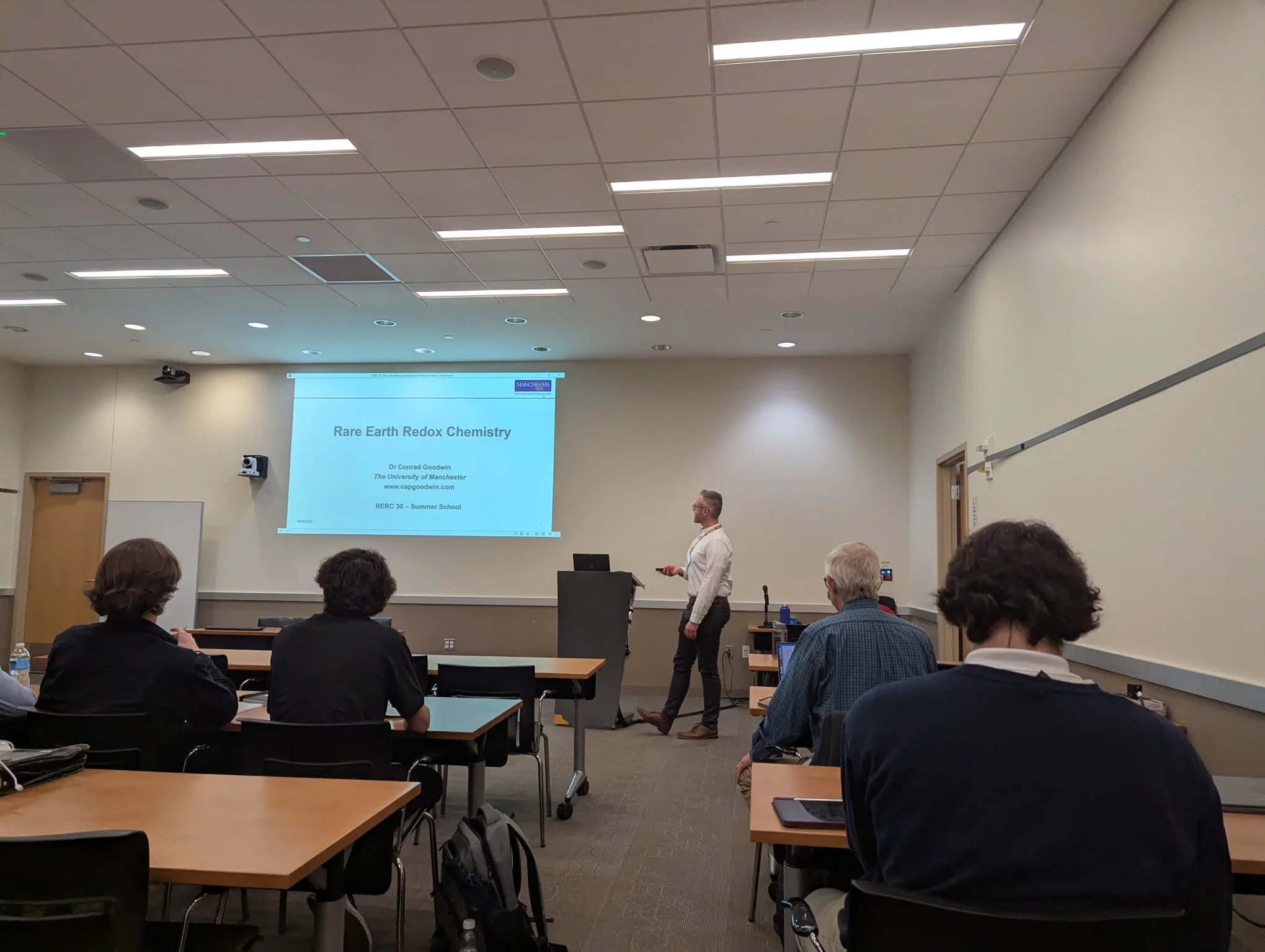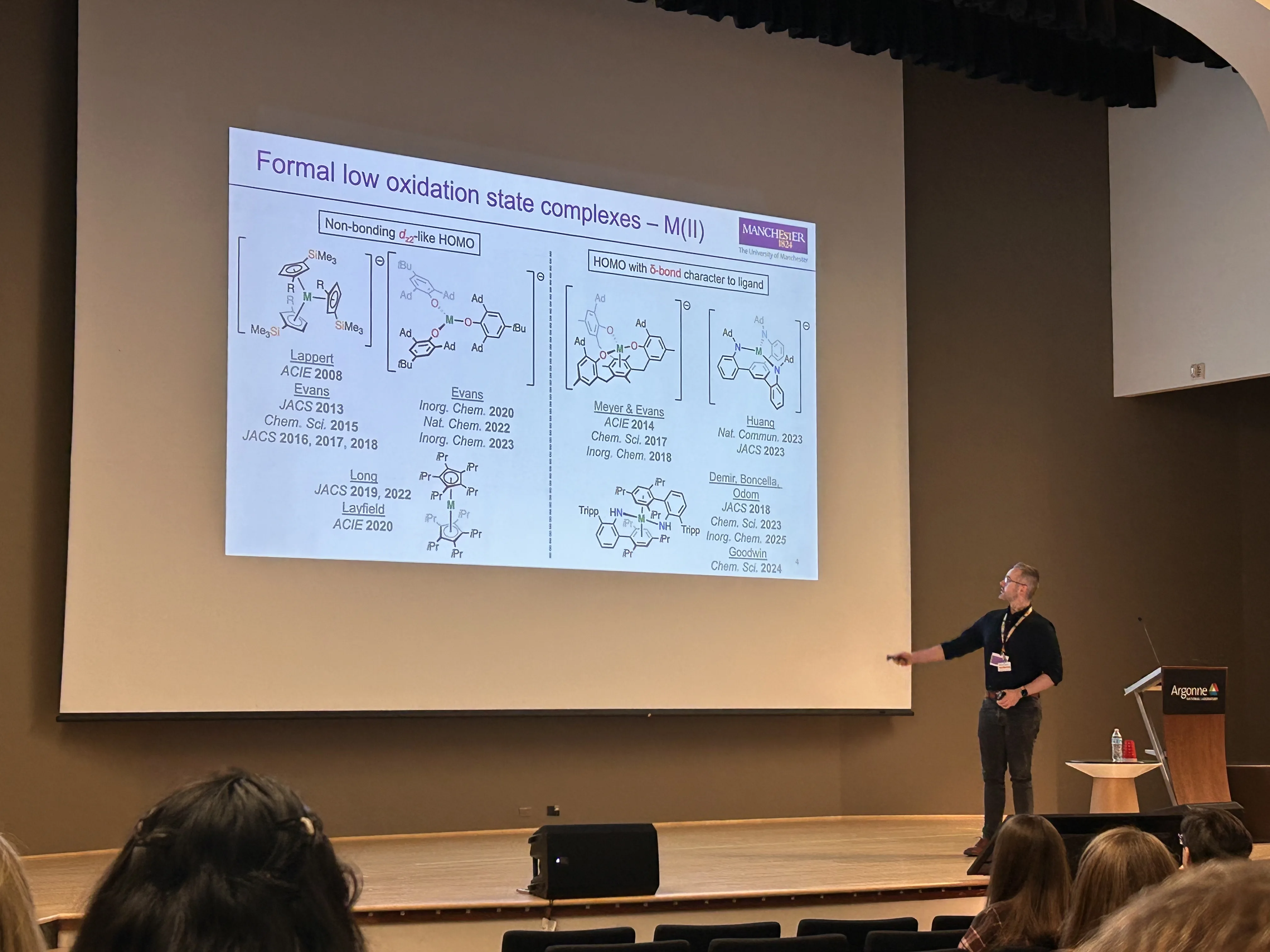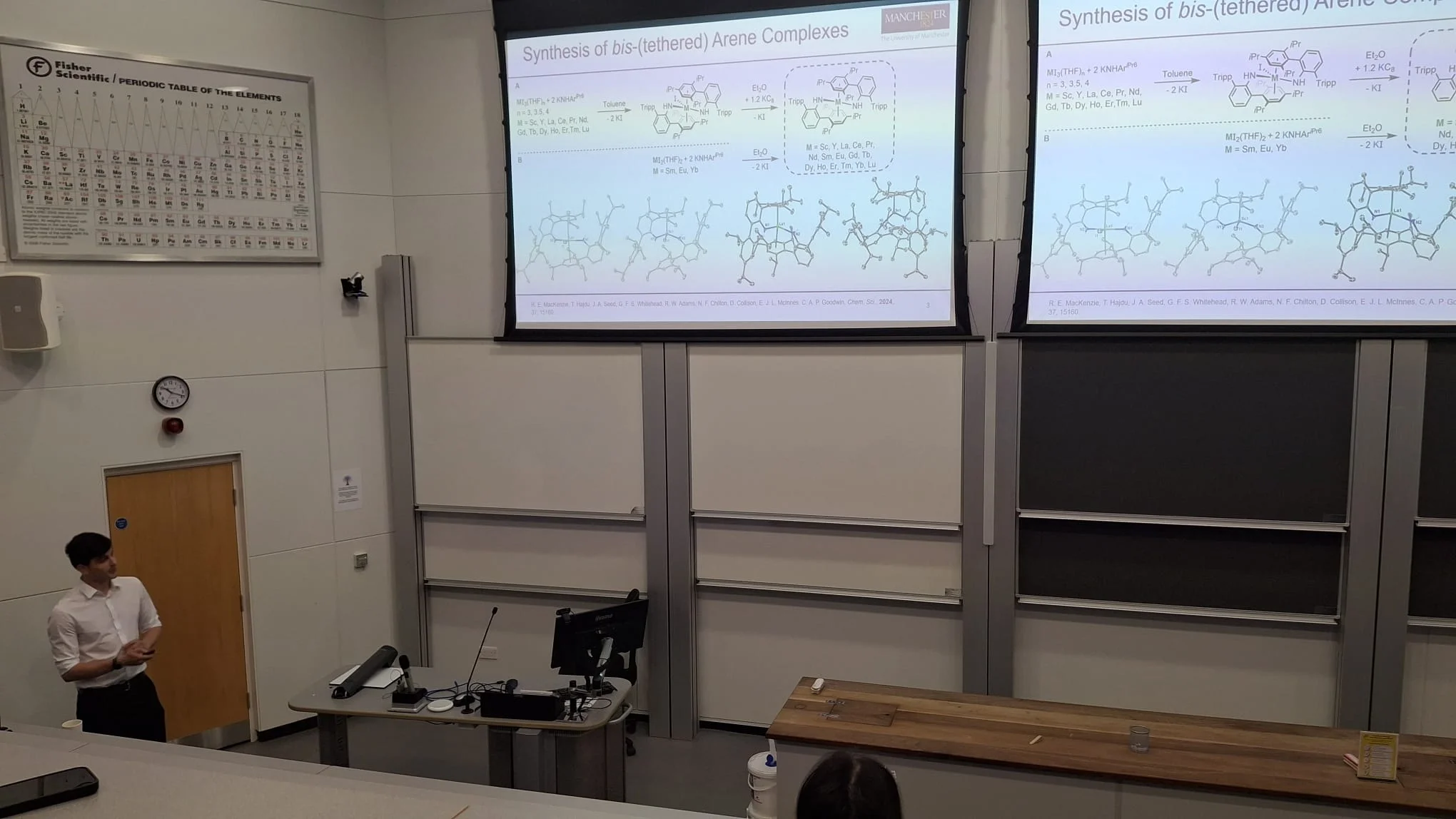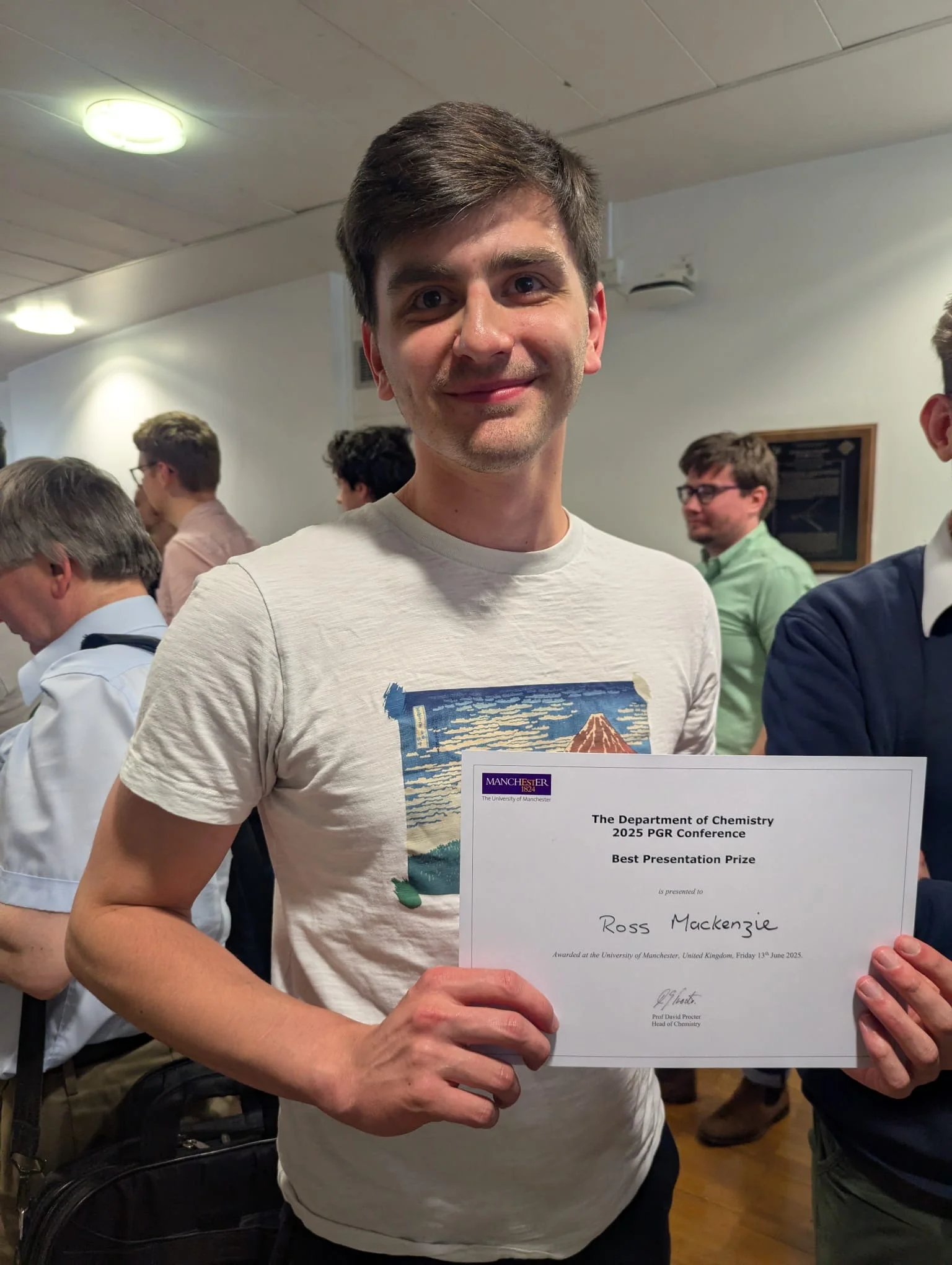- 2025-10-21: Ben leads our latest high oxidation state f-element chemistry in "Synthesis, Redox Chemistry, and Electronic Structures of Bis-di(silylamido)silane f-Element Complexes" out today in Inorganic Chemistry (DOI: 10.1021/acs.inorgchem.5c03345).
- 2025-10-7 to 10-9: Conrad, Ben (Réant), Liam, Ross, and Orry attended Terrae Rarae – 33. Tage der Seltenen Erden at KIT in Karlsruhe (Germany), after severe travel disruption that saw half the group spend time in four countries in one day.
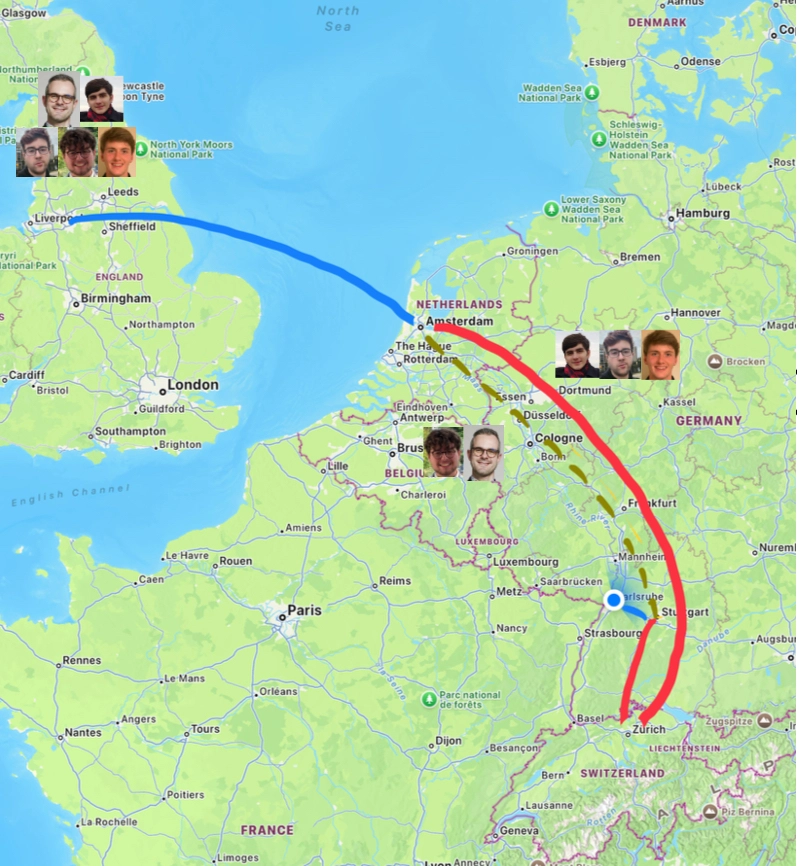
- 2025-09-22: We also welcome Iulia Turcas (PGR) working with us jointly alongside Prof. McInnes and Winpenny EPR spectroscopy of f-element complexes.
- 2025-09-21: The group welcomes new members Kaitlin Makin-Robinson (PGR), Stanley Bagio (PGR, jointly with Dr. Bowen), and Ben Mullock (MChem – "BenChem"). Stanley and Ben join Liam and Cameron on low oxidation state organometallic chemistry, while Kaitlin joins Ben (Réant) and Orry working on high oxidation state chemistry.
- 2025-09-19: Transuranium organometallic chemistry is featured on the front cover of Nature Reviews Chemistry issue 9 (link). A free to view version of the article can be found here (https://rdcu.be/eABFQ).
- 2025-08-13: We are delighted to share our review article on Transuranium organometallic chemistry out today in Nature Reviews Chemistry (DOI: 10.1038/s41570-025-00732-4). The Review celebrates the evolution of non-aqueous and organometallic chemistry with the elements beyond uranium and how the field has advanced in the almost 80 years since the "actinide" concept was first by Seaborg.
- 2025-08-04: Bonus content! During our work on bis-di(silylamido)silane f-element complexes, we found the Dy(III) analogue is a record-setting single molecule magnet (SMM) with a hysteresis temperature of 31 K but, more remarkably, it is a rare example of a non-metallocene SMM with a 100-second blocking temperature above 4 K. Please see the preprint on ChemRxiv: Magnetic Hysteresis at 31 K in a Four-Coordinate Dysprosium(III) Amide Complex. DOI: 10.26434/chemrxiv-2025-m8q8l.
We are The Goodwin Group in the Department of Chemistry The University of Manchester, and we are working to further our understanding of the f-block elements – lanthanides and actinides. We predominantly focus on non-aqueous chemistry to realise well-defined coordination geometries with which to stabilise highly reactive oxidation states and bonding motifs.
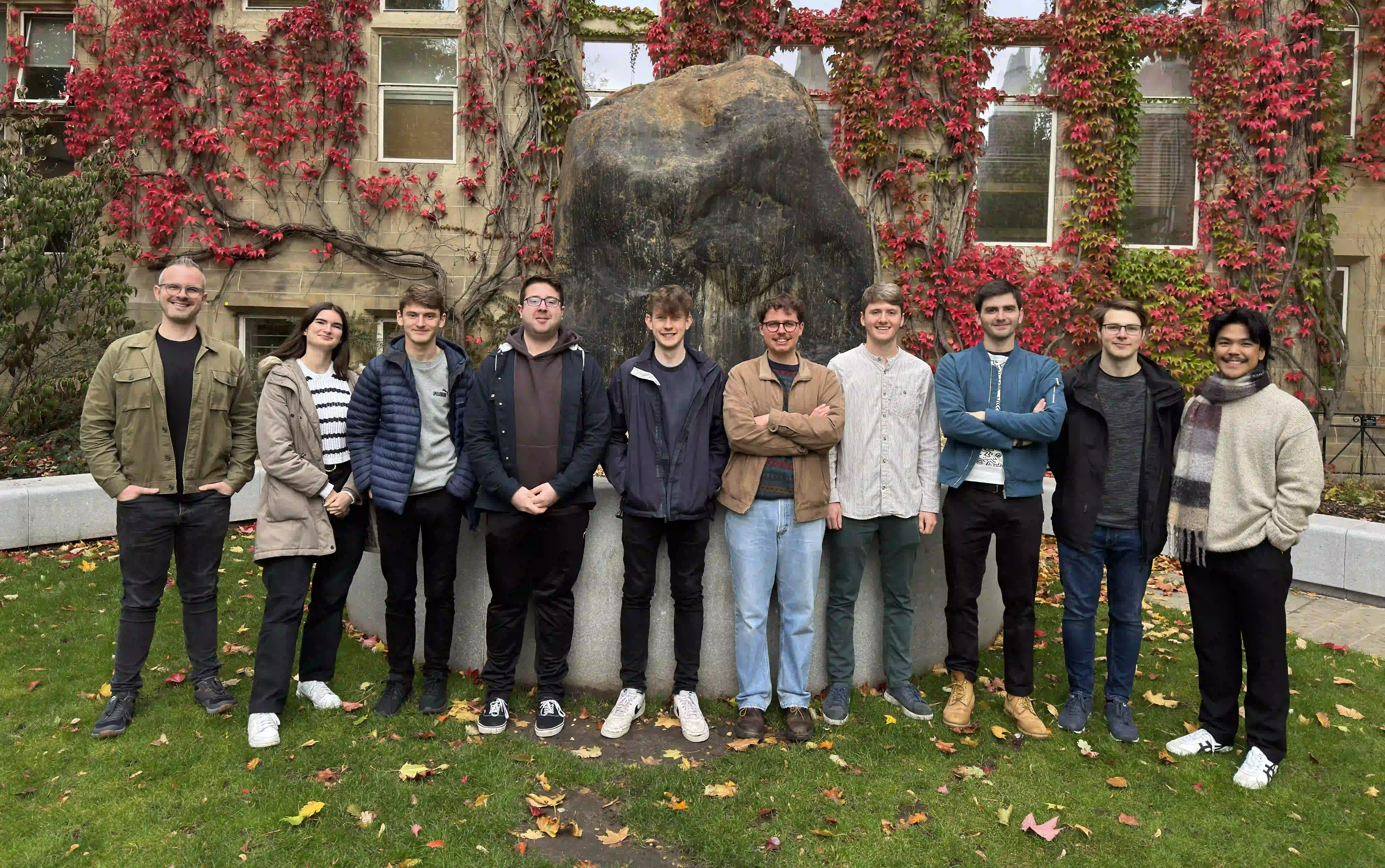
The Group in October 2025
